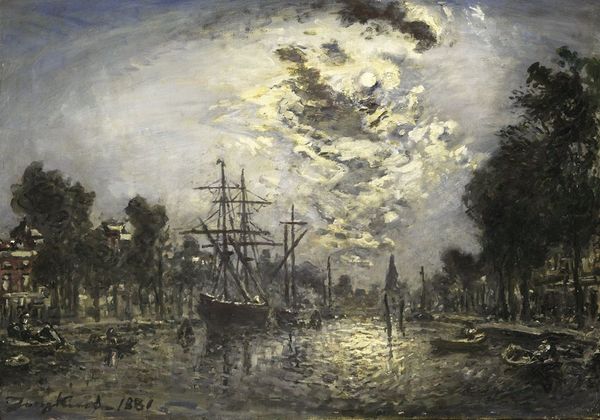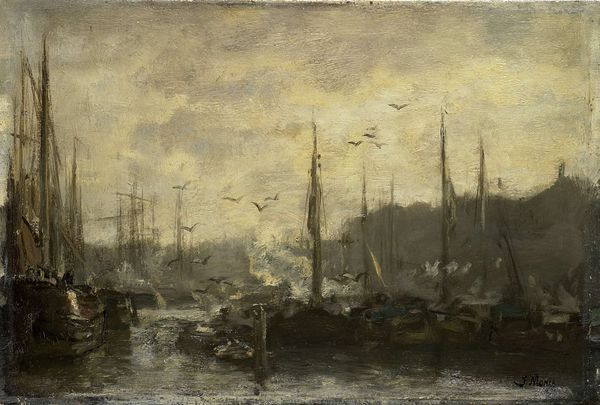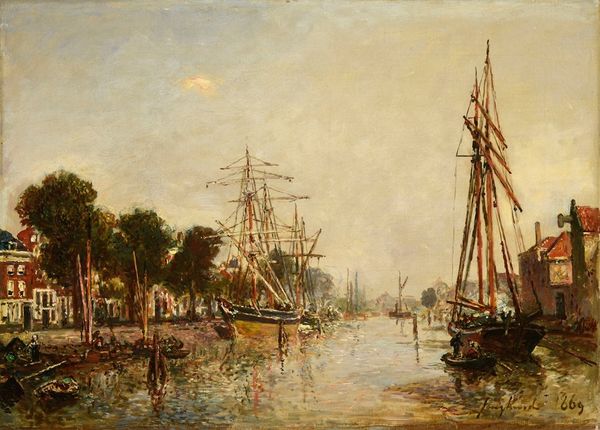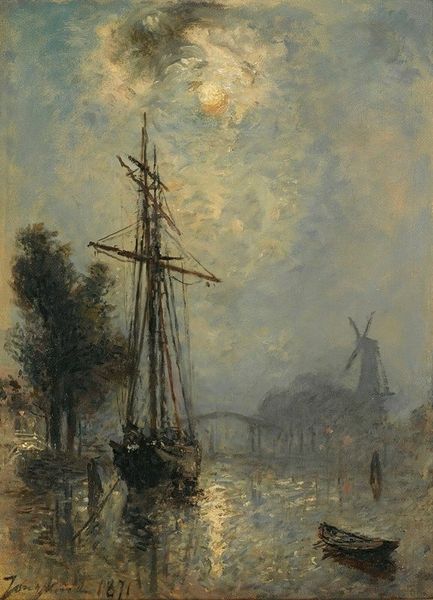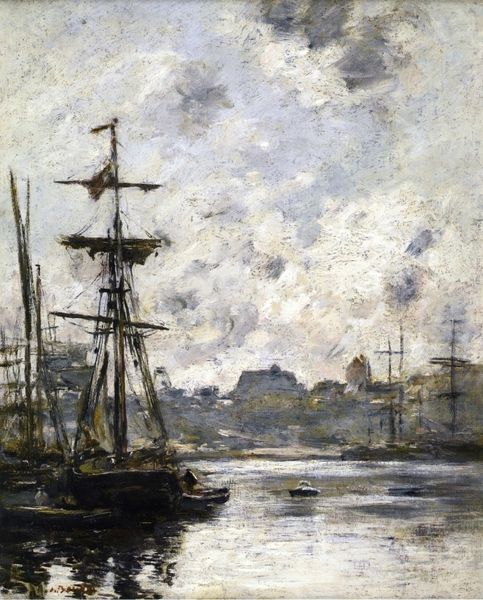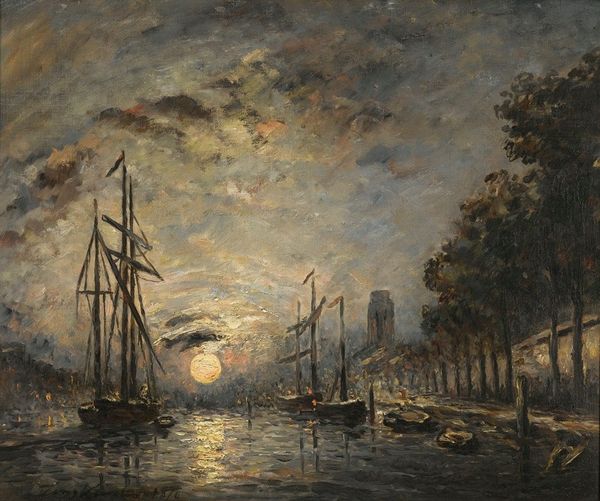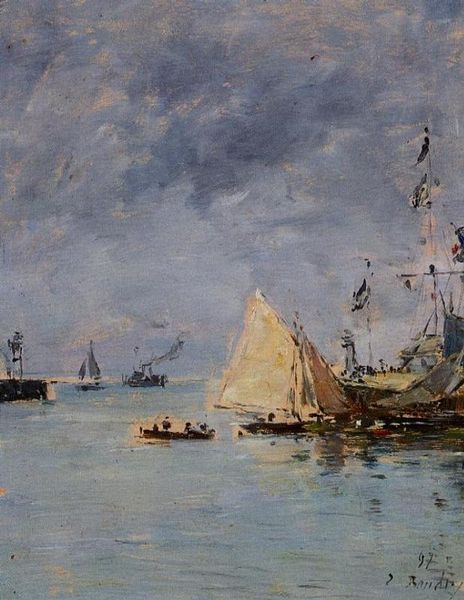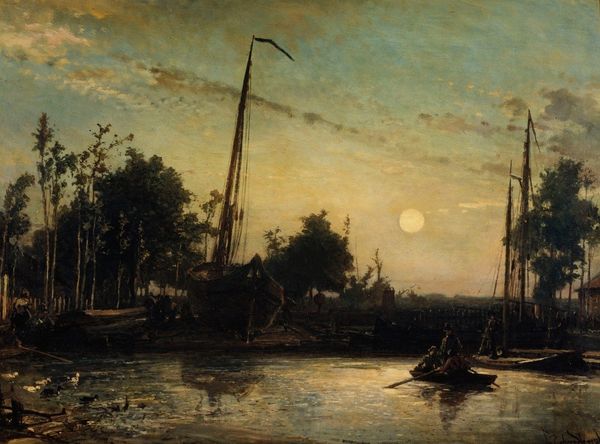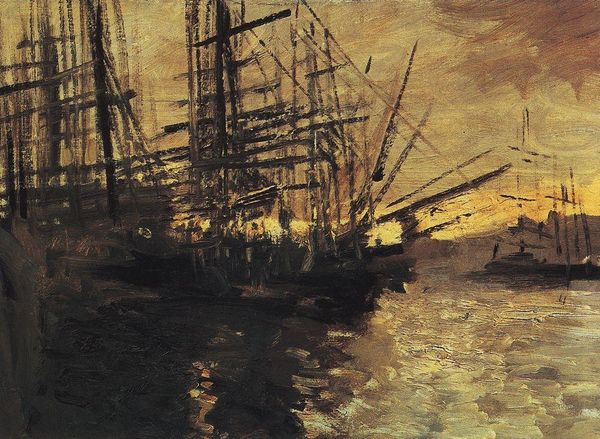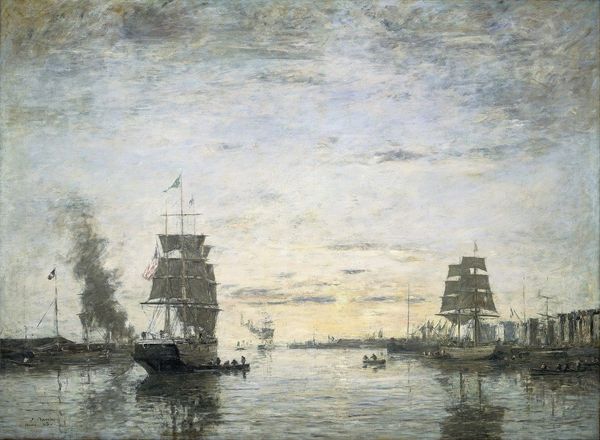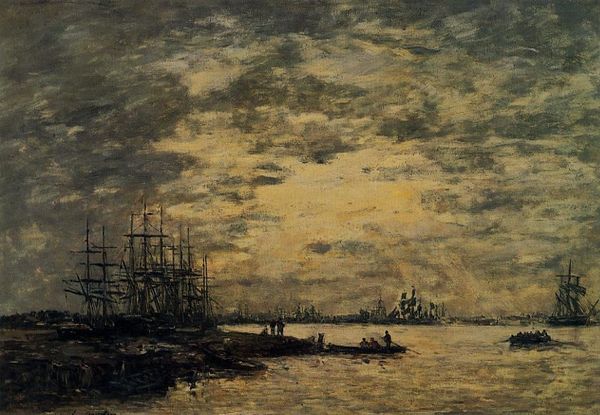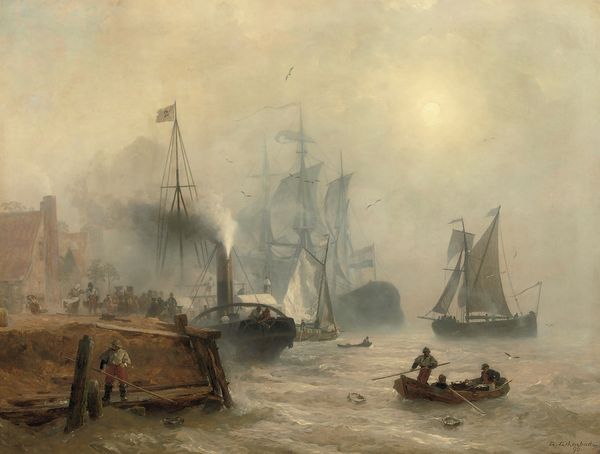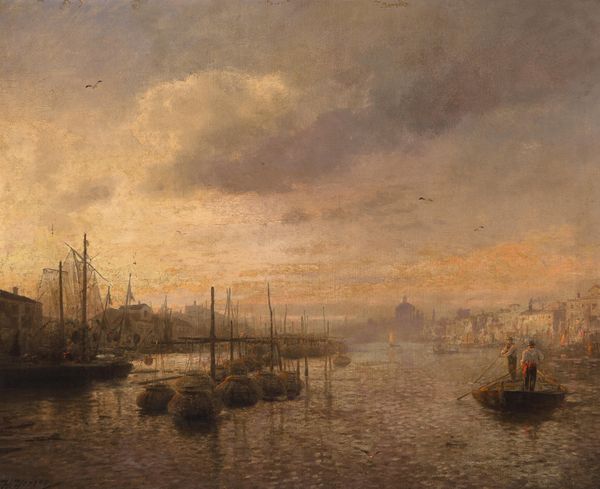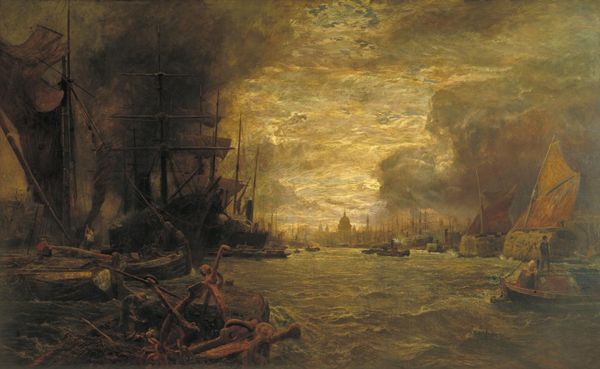
Copyright: Public Domain: Artvee
Curator: Looking at "Les Moulins de Rotterdam," painted by Johan Barthold Jongkind in 1870, the first thing that strikes me is the textural quality of the oil paint, particularly how it captures the reflective surface of the water. Editor: It feels incredibly atmospheric. You can almost smell the dampness in the air and feel the chill of the water. There’s something about the composition too, the way the windmills on the left counterpoint the ships on the right. I wonder about Rotterdam itself in that era. Curator: Jongkind was a pivotal figure bridging the Barbizon School and Impressionism. The way he renders light and shadow is certainly reminiscent of later Impressionist works. And consider Rotterdam at that time – a crucial port city, driving its economy with ships. His careful attention to those ships speaks volumes. Editor: Absolutely. And what did the labor conditions on those ships entail? Or even in the mills themselves. Jongkind focuses on the aesthetics, but these were sites of human exertion and potential exploitation. Also, what does it mean that the workers are hidden from our gaze? Is this perhaps to romanticize this industry? Curator: The social context is unavoidable. However, when I consider his practice, the layering of paint to evoke the scene’s dynamism, the material transformation is significant. How he takes these pigments derived from the earth and crafts this particular image. Editor: Perhaps, but even the pigments he used held certain social meanings in terms of accessibility and price! That material process doesn’t happen in a vacuum. The boats facilitated the global transport of raw materials for oil paint! Everything links back to global and societal context. Curator: Fair enough! It’s difficult to disentangle the different threads here, certainly. Regardless, Jongkind is undeniably masterful with capturing the city, isn't he? Editor: Definitely. The image makes one question progress and expansion and who it serves. And as a representation, its value shifts as the economic landscape of Rotterdam does. Curator: It seems we agree on Jongkind's captivating effect, although maybe we emphasize different areas to explore what informs our perceptions. Editor: Absolutely, that interplay is essential, not only in understanding this artwork, but how society influences it and is influenced by it!
Comments
No comments
Be the first to comment and join the conversation on the ultimate creative platform.
